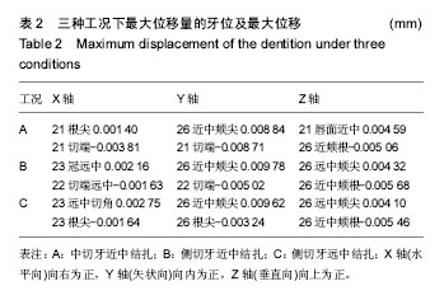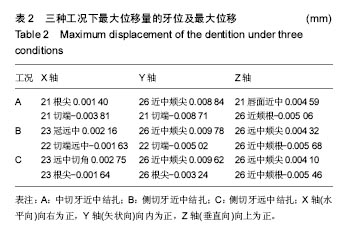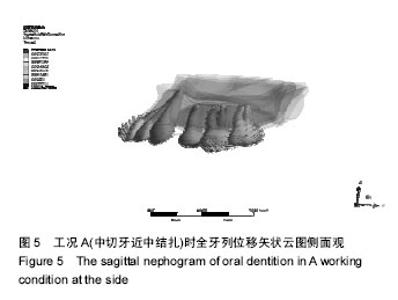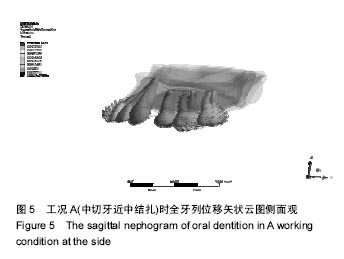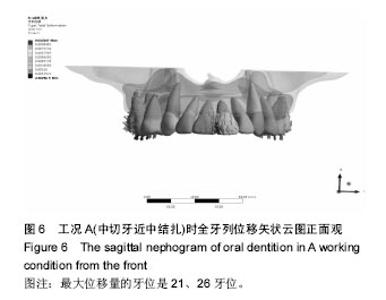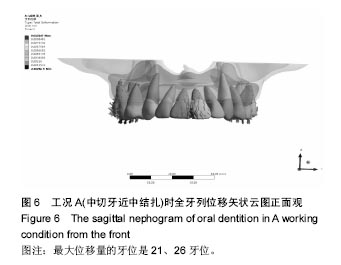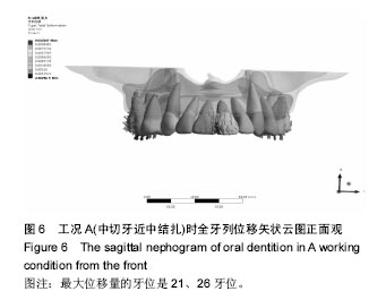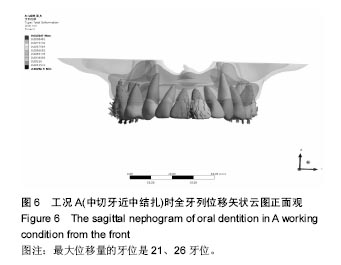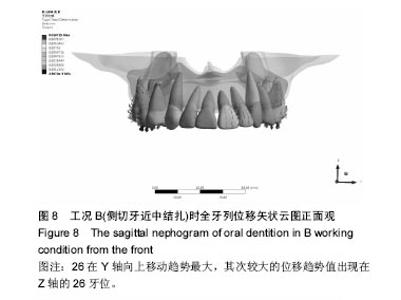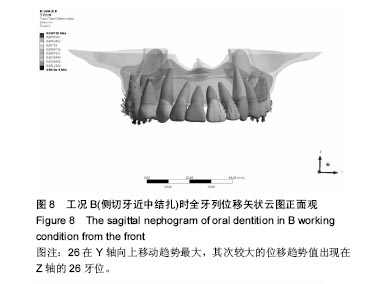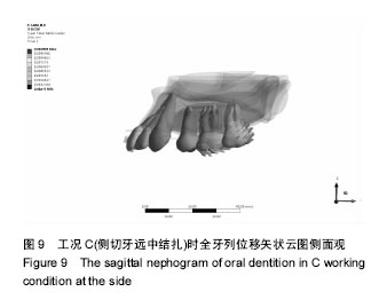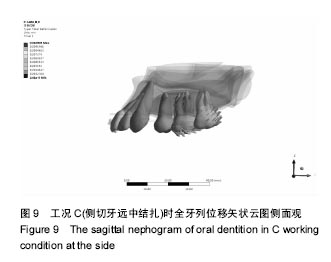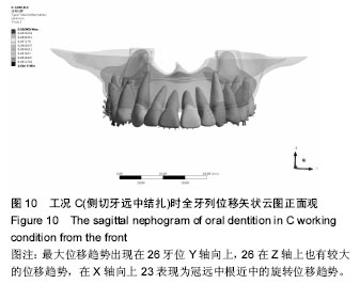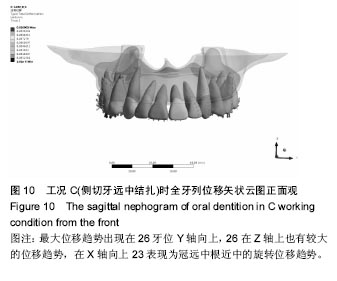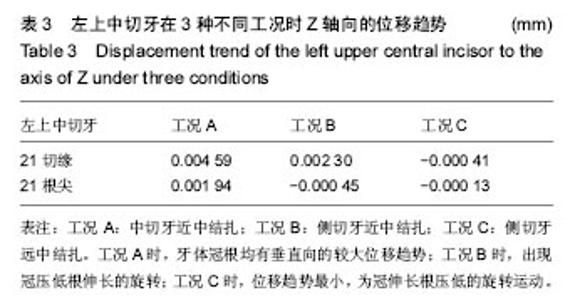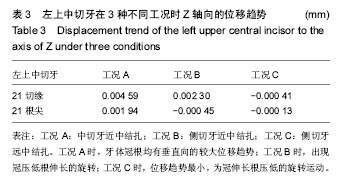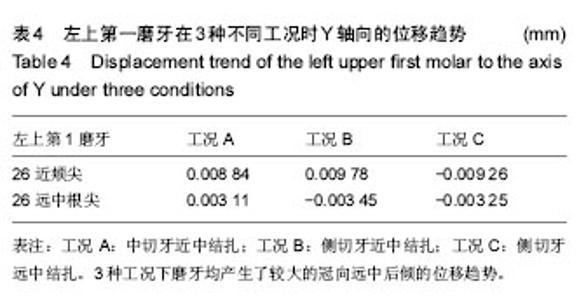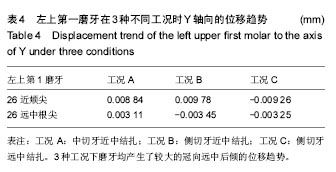| [1]许天民.正畸支抗新视角——生理性支抗控制系列讲座(一) [J].中华口腔正畸学杂志,2015,22(1):45-49.[2]许天民.生理性支抗控制系列讲座(二)谁在主导错(牙合)矫治的力系统?[J].中华口腔正畸学杂志,2015,22(2):112-114。[3]许天民.生理性支抗控制系列讲座(三)低摩擦矫正器为什么不见得高效?[J].中华口腔正畸学杂志,2015,22(3):172-174.[4]陈斯,杜飞宇,陈贵,等.新型交叉颊面管对磨牙支抗保护作用的临床研究[J]. 中华口腔正畸学杂志,2013,20(1): 26-30.[5]苏杰华,刘佳莉,许潾于,等. 牵引方向对上颌前牙整体内收影响三维有限元分析[J]. 中国实用口腔杂志, 2014, 7(11): 656-660.[6]安晓莉,陈宏伟,司庆宗,等.摇椅弓滑动法整体内收上颌前牙的三维有限元分析[J].华西医口腔学杂志, 2013,31(1): 21-25.[7]苏忠平,何黎升,白石柱,等. 应用Mimics和HyperMesh软件建立人体下颌骨三维有限元模型[J]. 实用口腔医学杂志, 2012, 28(2):192-195.[8]董晶,张哲湛,周国良,等.上颌第一磨牙远中移动时牙周膜应力分布的非线性三维有限元分析[J]. 上海口腔医学, 2015, 24(3): 315-320.[9]黄家昕,张晓蓉,姚激,等.平行于功能平面水平向后牵引猴上颌骨矫形作用的三维有限元研究[J]. 华西口腔医学杂志, 2014, (2): 196-199.[10]Olmez S, Dogan S, Pekedis M, et al. Biomechanical evaluation of sagittal maxillary internal distraction osteogenesis in unilateral cleft lip and palate patient and noncleft patients: a three-dimensional finite element analysis. Angle Orthod. 2014;84(5): 815-824.[11]Gomez JP, Peña FM, Martínez V, et al.Initial force systems during bodily tooth movement with plastic aligners and composite attachments:A three-dimensional finite element analysis. Angle Orthod. 2015;85(3): 454-460.[12]Haak D, Page CE, Reinartz S, et al. DICOM for Clinical Research: PACS-Integrated Electronic Data Capture in Multi-Center Trials. J Digit Imaging. 2015;28(5): 558-566.[13]傅民魁,贾绮林,胡炜.当代口腔正畸学[M].3版.北京.人民军医出版社,2007:321.[14]Shrivastava A,Hazarey PV,Kharbanda OP,et al.Stress distribution in the temporomandibular joint after mandibular protraction: a three-dimensional finite element study.Angle Orthod.2015;85(2): 196-205.[15]Park JC, Shin HS, Cha JY, et al. A three-dimensional finite element analysis of the relationship between masticatory performance and skeletal malocclusion. J Periodontal Implant Sci.2015;45(1): 8-13.[16]蔡留意,林久祥,张月兰,等. 个体化舌侧矫治器微种植体支抗滑动法内收上前牙的三维有限元模型的构建[J].中华口腔正畸学杂志, 2014, 21(1): 14-18.[17]杨大鹏,丁士育,翟俊辉,等. 生理性支抗Spee氏弓矫治器矫治安氏Ⅱ1错(牙合)拔牙病例的临床体会[J]. 中华口腔正畸学杂志, 2015, 22(2): 96-99.[18]苏杰华,刘佳莉,许潾于,等. J钩高位牵引压低并内收上颌前牙的三维有限元分析[J]. 中华口腔医学杂志, 2015, 50(2): 84-88.[19]Sugiura T, Yamamoto K, Horita S,et al.The effects of bone density and crestal cortical bone thickness on micromotion and peri-implant bone strain distribution in an immediately loaded implant: a nonlinear finite element analysis.J Periodontal Implant Sci.2016;46(3):152-165.[20]Jörn D, Kohorst P, Besdo S,et al.Three-Dimensional Nonlinear Finite Element Analysis and Microcomputed Tomography Evaluation of Microgap Formation in a Dental Implant Under Oblique Loading.Int J Oral Maxillofac Implants. 2016 31(3):e32-42. [21]陆史俊,王震东,倪晓宇,等.三段式片段弓技术打开咬合的三维非线性有限元模型的建立及生物力学分析[J]. 华西口腔医学杂志, 2013, 31(1): 74-79.[22]Harrison NM, McDonnell P, Mullins L, et al. Failure modelling of trabecular bone using a non-linear combined damage and fracture voxel finite element approach. Biomech Model Mechanobiol. 2013;12(2): 225-241.[23]Moroney TJ, Turner IW. A three-dimensional finite volume method based on radial basis functions for the accurate computational modeling of nonlinear diffusion equations. Journal of Computational Physics.2007;225(2):1409-1426. [24]林新平.临床口腔正畸生物力学机制解析[M].北京:人民卫生出版社,2012:18.[25]任翀,许天民.牙弓内、外侧生理性肌肉压力分布规律的研究进展[J].中华口腔正畸学杂志,2013,20(3):167-169. |
